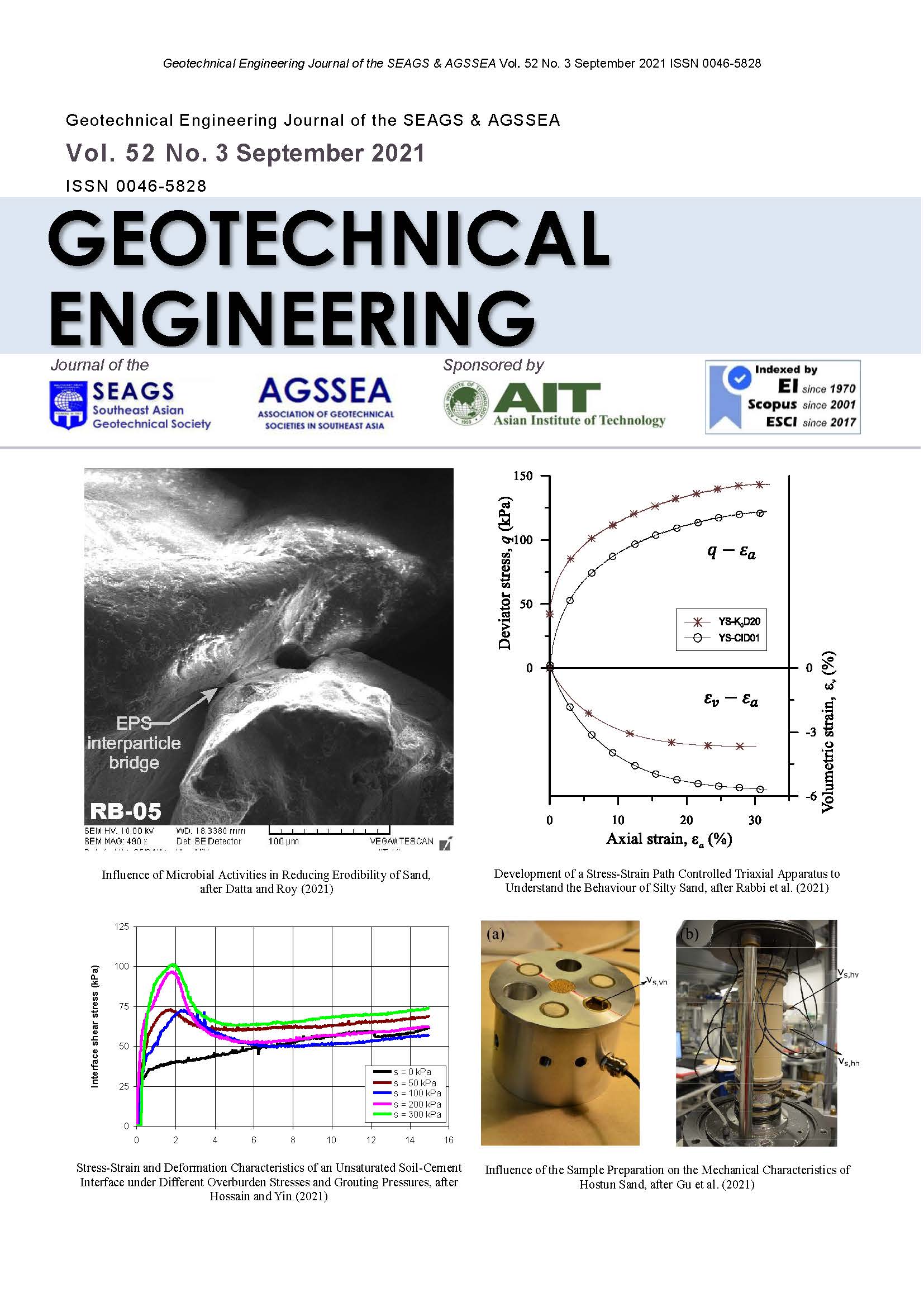Effective Treatment Technique for Producing A Highly Pozzolanic Clay in a Construction Work
Main Article Content
Abstract
A high reactivity pozzolanic clay was developed in this work as a partially replacing cement material for eco-friendly construction. Kaolinite clay was treated at a transformation temperature range of meta-kaolin formation for 6 h in a simple electric furnace. The heated kaolinite clay was separately cool down with 2-different techniques, a normal cool down using a free-cooling rate and a quenching cool down, to make an active phase in a pozzolanic activity. The pozzolanic activity of the treated kaolinite clay was evaluated via the Frattini test, and the compressive strength of the treated clay-cement mixed samples was reported. In comparison to the normal cool down technique, the quenching cool down technique in the heat treatment process generated a higher reactivity clay with a higher degree of reactive metakaolin phase. The Frattini test revealed a decrease in Ca2+ and OH- ions in the Ca(OH)2 solution, which confirmed the pozzolanic reaction between the Ca(OH)2 and the high reactive kaolinite clay from the quenching technique. The replacement of cement with a highly reactive pozzolanic kaolinite clay effectively enhanced the compressive strength above the standard requirements within 2-days curing. Also, the compressive strength of the treated clay-cement mixed samples after 2-days curing was comparable to the strength after 7- days curing of the cement samples. This study thus revealed a new effective technique to produce a high potential clay as a cement replacement material in the construction works.
Article Details

This work is licensed under a Creative Commons Attribution-NonCommercial-NoDerivatives 4.0 International License.
Copyright © 2019 Association of Geotechnical Societies in Southeast Asia (AGSSEA) - Southeast Asian Geotechnical Society (SEAGS).


